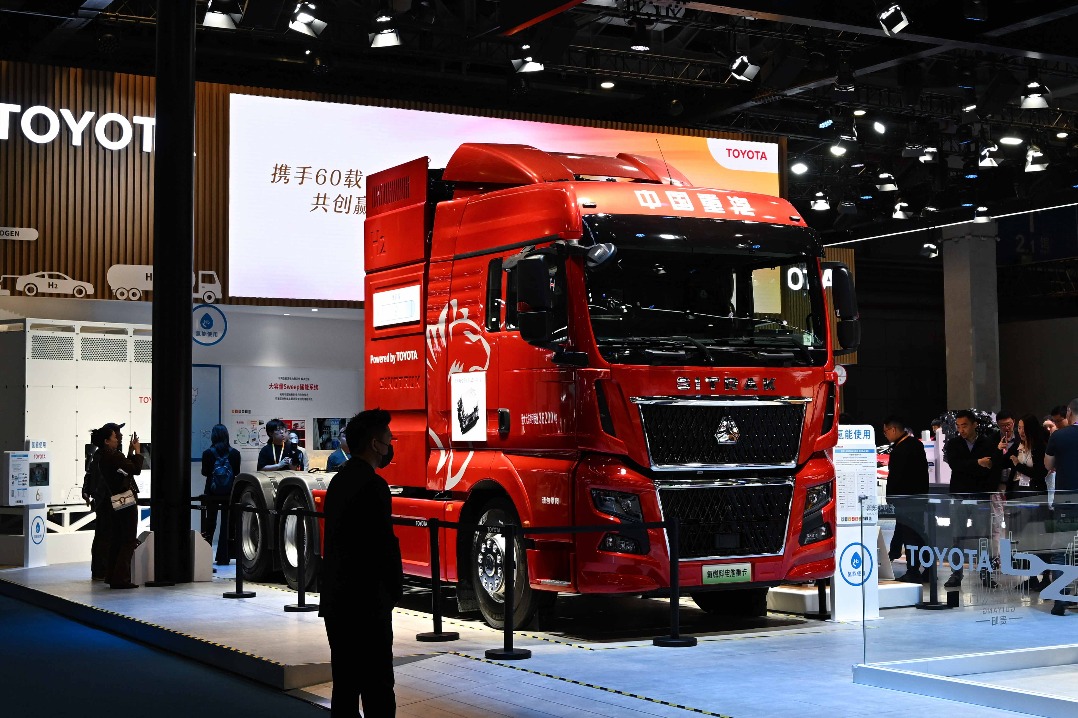Foreign firms ride nation's big changes


Stephane Nassau, a French national and president for global sales at the Climate Solutions division of the Danish technology and engineering conglomerate Danfoss Group, thinks that China's visa-free policy for many European countries, including France and Germany, has been a significant factor in encouraging more European business executives to travel to China in recent months.
Expressing optimism about China's economic outlook for 2024 and beyond, Nassau said many opportunities will be unleashed by the ongoing green transition and industrial upgrade under China's "dual-carbon" goals.
With China entering a new era of green and innovation-led growth, he said the country has transitioned from a primarily vast consumer market and low-cost manufacturing hub to a critical regional export base, innovation center and an integral component of the global supply chain.
In addition to building a semiconductor power module plant in Nanjing, Jiangsu province, with an investment of 100 million euros ($107 million), Danfoss started construction of the second phase of its largest manufacturing and innovation base in Haiyan, Zhejiang province, in late April. Upon completion, the expanded base will bolster Danfoss' operations not only in China but also globally.
Following China's announcement that it has lifted all restrictions on foreign investment in the manufacturing sector and implemented measures to ensure equal treatment for foreign-funded companies, the actual foreign direct investment in China came in at 301.67 billion yuan ($42.46 billion) in the first quarter, remaining at a high level, according to information released by the Ministry of Commerce.
The country's high-tech manufacturing sector attracted 12.5 percent of the FDI inflows in the first quarter, up 2.2 percentage points year-on-year.
Danfoss is by no means the sole beneficiary among foreign companies operating in China. Driven by an automobile production boom in China, Nipsea Group, the Singapore-headquartered paints and coatings manufacturer, will start a new plant, built with an investment of 960 million yuan, in Tianjin in June.
This factory will focus on producing industrial coatings to meet the surging demand from China's automotive industry.
"We are currently strong in the automotive segment, which is undergoing significant changes. For instance, electric vehicles currently constitute a fraction of total car sales, but this is expected to increase dramatically between 2030 and 2040 as gasoline-powered vehicles decline," said Wee Siew Kim, CEO of Nipsea.
Moreover, hybrid vehicles are also gaining in popularity. Currently, China is the largest EV market globally and is home to some of the world's leading EV makers, he said.
The latest data showed that local and international automakers in China made a record 30.16 million vehicles in 2023. They also delivered 30.09 million units, another record. Both figures were up around 12 percent year-on-year, data from the Beijing-based China Association of Automobile Manufacturers showed.
Data like that enthuse Maximilian Foerst, president and CEO of the China unit of Zeiss Group, a German multinational company operating in the optical and optoelectronic industries. "We see China as a significant contributor to the global wealth growth in the next five years. That's why Zeiss is confident in the Chinese market in terms of business and investment."
The German company launched a new quality excellence center in Dongguan, a manufacturing hub in Guangdong province, in late March.
The new facility, which received the largest investment among such centers in China, accomplishes multiple functions, including demonstration, measurement, training, certification and computer programming service.
Thanks to its substantial investment in research and development, and supportive industrial policies, China is a leading contributor to many trends in technology and innovation that are shaping the future, including digital transformation, new energy vehicles, green energy, artificial intelligence, healthcare, myopia management and other areas, said Foerst.
The number of newly established foreign-invested firms in China reached 12,000 between January and March, up nearly 21 percent year-on-year, statistics from the Ministry of Commerce showed.
zhongnan@chinadaily.com.cn




































